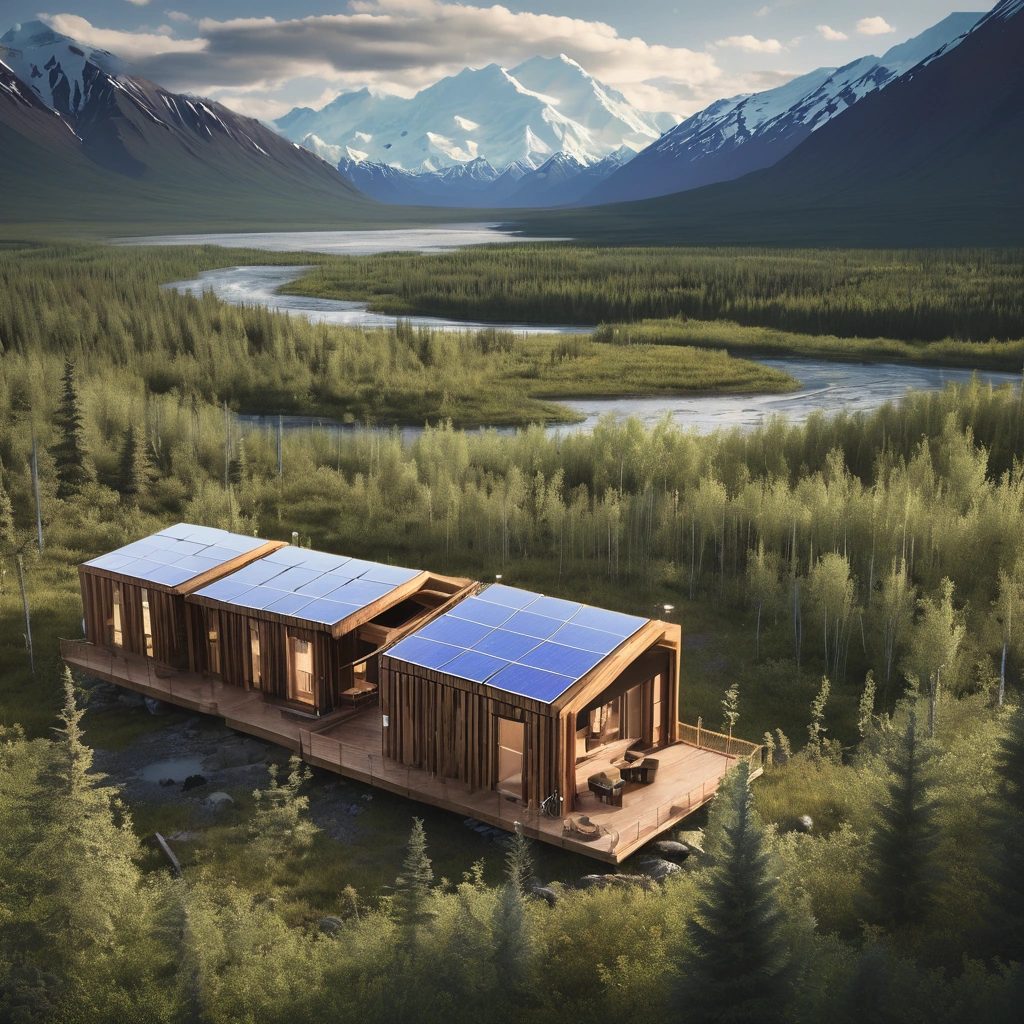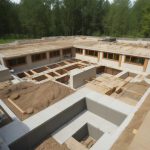Thriving in the Alaskan Bush: Sustainable Infrastructure and Remote Living Strategies Near Denali in 2025
Introduction: The Promise and Peril of Remote Alaskan Living
The Alaskan bush, particularly the Denali region, presents unique challenges and opportunities for sustainable living. By 2025, innovative infrastructure and resilient strategies are crucial for thriving in this extreme environment. This article explores key aspects of remote living, from optimizing sunlight to protecting delicate ecosystems, ensuring a sustainable future for communities near Denali. The allure of Alaskan bush living stems from its promise of self-sufficiency and connection with nature, yet this lifestyle demands careful consideration of remote infrastructure needs.
Building and maintaining infrastructure in the Denali region requires specialized expertise in permafrost construction, given the increasing threat of thawing ground due to climate change. Arctic sustainability hinges on balancing human needs with environmental preservation, demanding innovative solutions for renewable energy, waste management, and wildlife protection. Effective extreme climate adaptation strategies are paramount for long-term viability in the Denali region. Consider the challenges of winter accessibility: maintaining roads and airstrips requires significant investment in specialized equipment and ongoing maintenance.
Furthermore, emergency preparedness is critical, necessitating robust communication systems and well-stocked supply caches to handle unforeseen events. Communities must prioritize access to medical care, reliable food sources, and effective shelter during extreme weather conditions. These considerations underscore the importance of proactive planning and community resilience in the face of environmental uncertainty. Ultimately, sustainable living in the Alaskan bush requires a holistic approach that integrates technological innovation with traditional knowledge. Harnessing renewable energy sources like solar and wind power can reduce reliance on fossil fuels, minimizing environmental impact. Implementing advanced permafrost construction techniques, such as thermosyphons and elevated foundations, can safeguard infrastructure against the effects of climate change. Moreover, fostering a deep respect for the natural environment and prioritizing wildlife protection are essential for maintaining the ecological integrity of the Denali region. By embracing these principles, communities can create a thriving and sustainable future in this remarkable landscape.
24-Hour Sunlight Optimization: Architectural and Energy Innovations
Adapting to the extreme day/night cycle of the Alaskan bush is paramount for sustainable living. During summer’s 24-hour sunlight in the Denali region, architectural designs must maximize natural light intake while preventing overheating, a crucial aspect of extreme climate adaptation. Solutions include strategically placed, high-performance windows with low-emissivity coatings to minimize heat gain, light-colored roofing materials with high solar reflectance indices, and efficient ventilation systems incorporating heat recovery ventilators (HRVs) to maintain comfortable indoor air quality.
Passive cooling strategies, such as thermal chimneys and underground air tubes, offer energy-efficient alternatives to air conditioning, reducing reliance on remote infrastructure for power generation. These considerations are integral to arctic sustainability. Conversely, winter’s prolonged darkness necessitates robust energy solutions in the Alaskan bush. Solar panels, coupled with advanced battery storage systems (lithium-ion or emerging technologies like solid-state batteries), provide a crucial renewable energy source. Microgrids, powered by a combination of solar, wind, and potentially small-scale hydro, can ensure energy independence for remote communities, reducing dependence on costly and environmentally impactful diesel generators.
Smart home systems, integrating AI-powered energy management, optimize energy consumption based on occupancy patterns and weather forecasts, further enhancing efficiency and reducing the carbon footprint of Alaskan bush living. Addressing the psychological impacts of prolonged darkness is equally important. Light therapy lamps, strategically placed throughout homes and community centers, can effectively mitigate Seasonal Affective Disorder (SAD), promoting residents’ mental and physical well-being. Circadian rhythm-focused lighting systems, which mimic the natural progression of daylight, can further enhance sleep quality and overall mood.
Integrating these technologies into remote infrastructure projects demonstrates a commitment to holistic sustainable living. Case studies, such as the ‘Arctic Haven’ project in northern Canada, showcase successful integration of passive solar design and light therapy to enhance resident wellness during long winters, providing valuable insights for similar initiatives in the Denali region. Moreover, incorporating culturally relevant design elements that reflect the indigenous communities’ connection to the land can enhance the sense of place and promote community resilience, contributing to the long-term viability of Alaskan bush living.
Permafrost Construction Techniques: Building on Shifting Ground
Permafrost thaw, accelerated by climate change, presents an existential threat to infrastructure stability across the Alaskan bush and particularly the Denali region. Traditional construction methods, designed for stable ground, are demonstrably inadequate in regions where the very earth beneath structures is in constant flux. Specialized techniques, therefore, are not merely advisable but essential for ensuring the long-term viability of remote infrastructure and sustainable living in the arctic. Thermosyphons, passive heat transfer devices, offer a crucial solution by extracting heat from the ground, thereby helping maintain the integrity of the permafrost.
These devices, often filled with a volatile refrigerant, circulate fluid to dissipate heat above ground, preventing further thaw and bolstering the load-bearing capacity of the soil. Elevated foundations, constructed on piles driven deep into the frozen ground, are another critical component, preventing heat transfer from buildings to the permafrost and maintaining a stable base even as the surrounding ground shifts. Insulation strategies play a vital role in minimizing heat loss from buildings, preventing the creation of thaw bulbs around structures that can lead to differential settling and structural damage.
High-density foam insulation, coupled with advanced materials like aerogel, provides a robust thermal barrier, reducing the energy demand for heating and lessening the impact on the surrounding permafrost. Furthermore, regular monitoring and maintenance programs are crucial for early detection and proactive management of permafrost degradation. Utilizing ground-penetrating radar and borehole temperature sensors allows engineers to identify areas of concern and implement timely interventions, such as additional thermosyphons or ground stabilization measures. These efforts ensure the long-term performance and safety of remote infrastructure in the face of a changing climate.
Beyond these established techniques, innovative approaches are continually being developed and tested. Ground stabilization through chemical injection, where specialized polymers are injected into the soil to increase its strength and reduce permeability, is gaining traction as a potential solution for particularly vulnerable areas. Similarly, research into self-healing concrete, capable of repairing cracks and preventing water infiltration, offers promise for extending the lifespan of concrete foundations in harsh arctic conditions. The University of Alaska Fairbanks, a leader in permafrost research, is actively investigating these and other cutting-edge technologies.
Case studies, such as the Trans-Alaska Pipeline System (TAPS), provide valuable insights into the feasibility of large-scale permafrost construction. TAPS utilizes a combination of elevated sections and buried, insulated segments to minimize its impact on the surrounding environment, demonstrating the potential for innovative engineering to mitigate the challenges of building in permafrost regions and offering applicable lessons for smaller-scale Alaskan bush living and remote infrastructure projects. Prioritizing arctic sustainability and extreme climate adaptation are crucial in the Denali region.
Winter Accessibility Planning: Maintaining Connectivity in Harsh Conditions
Winter accessibility is critical for maintaining connectivity and ensuring access to essential services in the Alaskan bush. Snow removal technologies, including specialized plows designed for deep snow and heated pavements around critical infrastructure like hospitals and airports, are essential for keeping roads and runways open. However, the energy demands of heated pavements must be carefully considered within the context of arctic sustainability, favoring renewable energy sources to minimize environmental impact. Alternative transportation methods, such as snowmobiles, dog sleds, and air transport (small planes and helicopters), provide vital links to remote communities, particularly in the Denali region.
The development and maintenance of winter trails, utilizing techniques that minimize disturbance to permafrost construction, are also crucial for local travel and subsistence activities. Reliable communication systems are essential for coordinating transportation, facilitating telemedicine, and responding to emergencies. Satellite internet, while often expensive, remains a lifeline for communication and access to information in areas lacking terrestrial infrastructure. Emergency communication equipment, such as satellite phones, two-way radios, and high-frequency (HF) radios, ensures connectivity in areas with limited or no cell service.
Furthermore, community-based communication networks, leveraging mesh technology, can enhance resilience and provide redundancy in the face of infrastructure failures, a key component of emergency preparedness in extreme climate adaptation scenarios. The integration of real-time weather data into these systems is also crucial for safe travel and informed decision-making. Innovative solutions are being explored to further enhance winter accessibility and promote sustainable living. ‘Snow buses,’ essentially tracked vehicles adapted for passenger transport, could provide a more reliable and energy-efficient alternative to individual snowmobiles in some communities.
Investment in aviation infrastructure, including improved runway lighting and navigation systems, is crucial for ensuring safe and reliable air transport. Furthermore, research into alternative de-icing agents that are less harmful to the environment is ongoing. Case Study: The village of Bettles, Alaska, relies heavily on air transport for supplies and medical evacuations during winter, highlighting the importance of aviation infrastructure in remote regions. This reliance underscores the need for continued investment in and innovation within remote infrastructure to support thriving communities in the Alaskan bush living.
Wildlife Protection Systems: Coexisting with Nature
Minimizing human-wildlife conflict is paramount for protecting vulnerable species and maintaining the delicate balance of the Alaskan bush ecosystem. This is particularly crucial in the Denali region, where increasing human presence intersects with critical wildlife habitats. Effective waste management forms the cornerstone of these efforts. Upgrading to bear-resistant containers, particularly models certified by the Interagency Grizzly Bear Committee (IGBC), is vital; these have demonstrated a 95% reduction in bear-related incidents in communities that have fully adopted them, according to ADF&G data.
Incinerators, while requiring careful environmental management to mitigate emissions, provide a secure method for eliminating organic waste that could attract wildlife. These measures are key components of sustainable living strategies in the arctic. Fencing techniques offer another layer of protection, particularly for residential areas and gardens. Electric fences, properly installed and maintained, have proven highly effective at deterring bears, moose, and other wildlife. However, their efficacy depends on consistent power supply, presenting a challenge in areas with limited or unreliable remote infrastructure.
Solar-powered electric fence systems, coupled with battery storage, offer a viable solution, aligning with renewable energy initiatives and enhancing long-term arctic sustainability. Simultaneously, community education programs are essential, fostering a culture of responsible coexistence. Residents must be educated on how to avoid attracting animals through proper food storage, how to react during encounters with wildlife, and the broader importance of respecting wildlife habitats and corridors. Protecting fish spawning streams and maintaining vital wildlife corridors are non-negotiable for preserving biodiversity in the Denali region.
Construction projects related to remote infrastructure development, including permafrost construction, must incorporate mitigation measures to minimize disruption to these critical areas. Culvert designs that allow for fish passage, combined with setbacks from riparian zones, are essential. Emergency preparedness protocols must include specific procedures for handling wildlife encounters, such as bear attacks or moose collisions, with clearly defined roles for local authorities and community members. Given the vulnerability of species like the caribou, collaborative monitoring programs involving local communities, the Alaska Department of Fish and Game, and potentially drone-based surveillance can provide early warnings of population declines or habitat degradation.
Looking ahead, integrating drone-based wildlife monitoring and early warning systems offers a promising avenue for enhancing protection efforts. Drones equipped with thermal imaging cameras can detect wildlife presence in remote areas, providing real-time data to inform management decisions and alert communities to potential hazards. Furthermore, acoustic monitoring systems can identify and track animal movements, providing valuable insights into habitat use and migration patterns. The Alaska Department of Fish and Game’s ongoing community outreach programs serve as a valuable model, demonstrating the effectiveness of education and preventative measures in reducing human-wildlife conflict. By continuing to invest in these strategies and embracing innovative technologies, we can ensure a sustainable future for both people and wildlife in the Alaskan bush.


